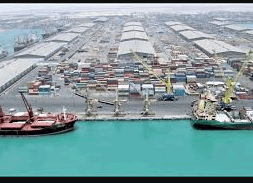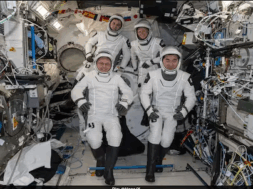
Chandrayaan-3 Mission will Help Create Future Strategies for Exploration: Analysts
NEW DELHI, July 1: India’s gala Chandrayaan-3 mission that took the country to the moon, has provided new insights into the lunar surface at the Moon’s southern high-latitude region, an analysis of data from the Pragyan rover’s exploration said.
The findings, which shed light on the distribution and origin of rock fragments in the area, mark a significant advancement in understanding of lunar geology.
The Pragyan Rover deployed on the moon surface by the Vikram Lander of Chandrayaan-3 mission traversed approximately 103 meters on the lunar surface during a single lunar day. Its journey took place in the Nectarian plains region between the Manzinus and Boguslawsky craters, an area of considerable scientific interest. India has designated Chandrayana-3 Vikram Lander’s touchdown site as the Shiva Shakti Point.
During its exploration, Pragyan encountered numerous small rock fragments ranging from 1 to 11.5 centimetres in size. These fragments were found scattered around the rims, wall slopes, and floors of small craters, each no larger than 2 metres in diameter. Interestingly, researchers noted an increase in both the number and size of rock fragments as the rover moved about 39 metres westward from its landing site.
The study proposes that a nearby crater, approximately 10 metres in diameter and located west of the landing site could be the source of these rock fragments. This “western crater” likely excavated and redistributed the rocks across the surrounding area. Over time, these fragments were buried multiple times due to the lunar regolith overturning mechanism, only to be re-exposed by the smaller craters that Pragyan encountered during its journey.
Of particular interest, two of the rock fragments showed signs of degradation, suggesting they have been subjected to space weathering. This observation provides valuable data on the processes affecting lunar surface materials over time.
These findings support previous studies that have suggested a gradual coarsening of rock fragments within the lunar regolith. The Chandrayaan-3 mission data thus contributes to a more comprehensive understanding of the Moon’s geological processes and surface composition.
Experts remarked that the success of the Pragyan rover in collecting this detailed information demonstrates the importance of in-situ exploration in advancing lunar science. As space agencies worldwide plan future missions to the Moon, the insights gained from the Indian mission would help create strategies for further exploration and potential resource utilization on the earth’s celestial neighbour, the experts feel.
(Manas Dasgupta)













